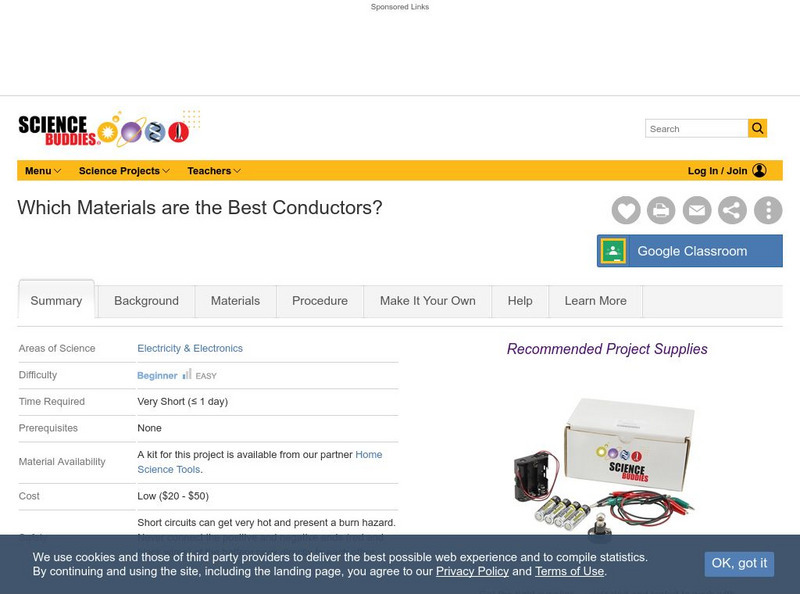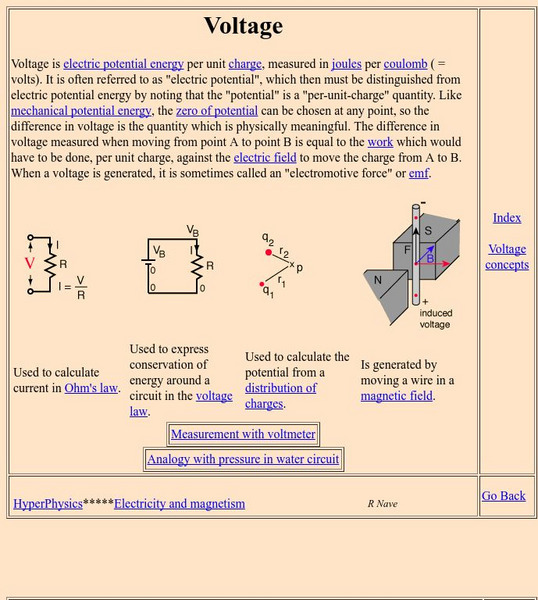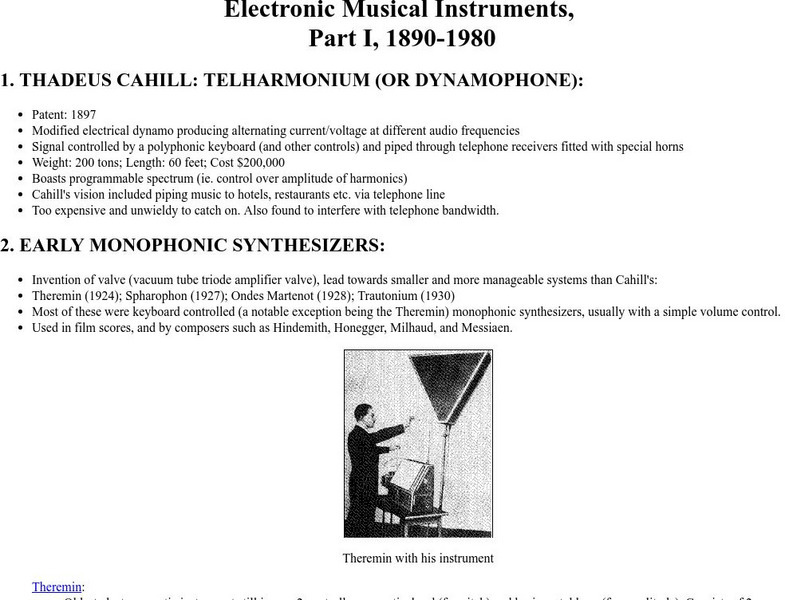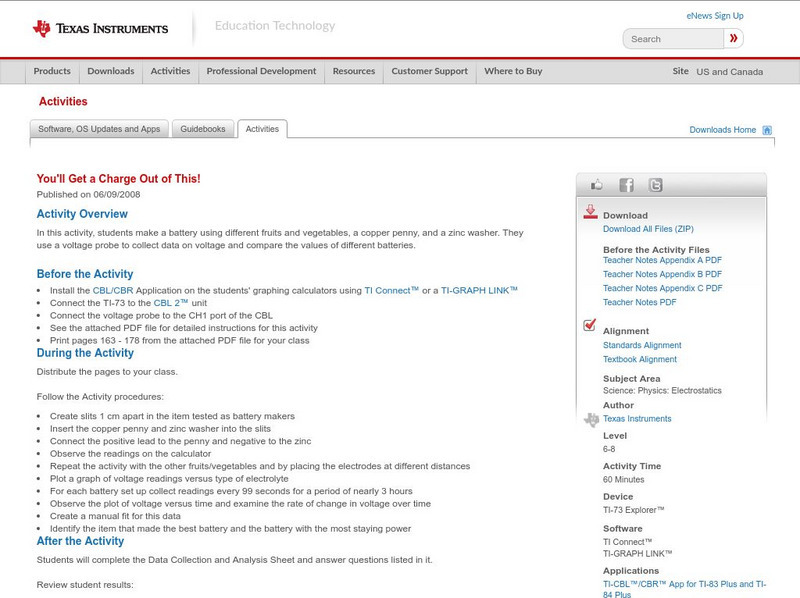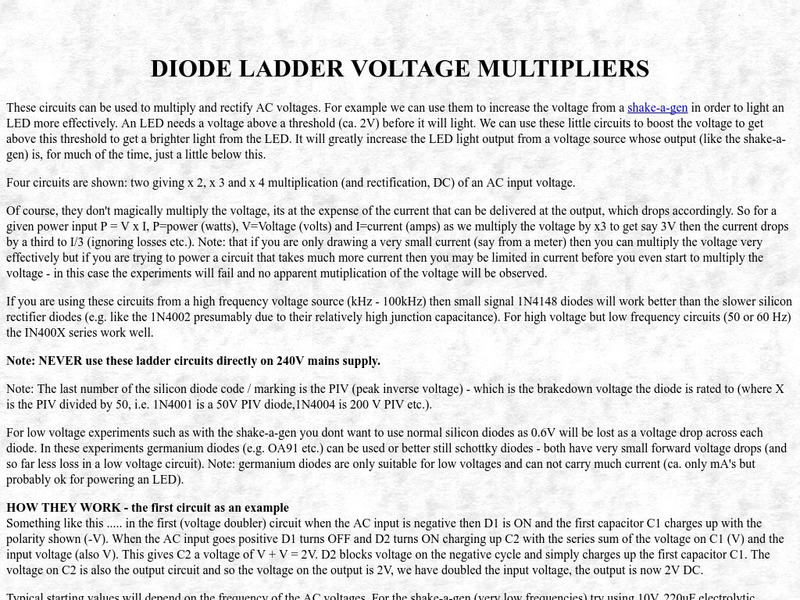Hi, what do you want to do?
Science Buddies
Science Buddies: Project Ideas: Which Materials Are the Best Conductors?
A simple science fair project to test whether electricity can flow between two things. The Science Buddies project ideas are set up consistently beginning with an abstract, objective, and introduction, followed by a section on terms,...
Howard Hughes Medical Institute
Hhmi: Biointeractive: The Virtual Neurophysiology Lab
Investigate the nervous system by looking at nerve cells in this virtual lab. This lab exercise allows students to experience a virtual dissection of a leech to use electronic equipment to explore the electrical activity of nerve cells....
Science Buddies
Science Buddies: Build Your Own Windmill Generator
Build your own windmill and see how the wind can be converted into energy to produce electricity. This science fair project should help you understand the use of wind as a source of alternative energy. The Science Buddies project ideas...
Georgia State University
Georgia State University: Hyper Physics: Electric Potential Energy
This site from Georgia State University defines electric potential energy and relates it to the concept of electric potential. Discusses the idea of a reference point or a zero potential location.
Georgia State University
Georgia State University: Hyper Physics: Capacitors
Online university physics text called "Hyperphysics". Three sections here: Capacitors, Capacitor Combinations, Charge on Series Capacitors. These are nice clean lessons, good illustrations, many hotwords to assist. A fine online lesson,...
Boston University
Elementary Physics: Current and Resistance
A general summary of electrical resistance including a comparison of AC and DC current.
Georgia State University
Georgia State University: Hyper Physics: Ohm's Law and Current Law
At this site from Georgia State University Ohm's law is stated in words and using equations. A JavaScript form allows for multiple practice problems with instant feedback and reinforcement. Kirchoff's current law is stated and...
Georgia State University
Georgia State University: Hyper Physics: Voltage
Electrical currents and voltage are defined and illustrated.
Cosmo Learning
Cosmo Learning: Advanced Analog Integrated Circuits
A collection of video lectures from a course introducing students to the advanced analog integrated circuits. Webpage includes twenty-seven lectures from a professor at the University of California, Berkeley. Lectures vary in length and...
Stanford University
Stanford University: Electronic Instruments
This resource provides information about a number of different types of synthesizers used from 1890 to 1980.
Wolfram Research
Wolfram Science World: Capacitor
A rather mathematical explanation of a capacitor. Gives all the appropriate formulae, with many hotwords for further info.
Texas Instruments
Texas Instruments: You'll Get a Charge Out of This!
In this activity, students make a battery using different fruits and vegetables, a copper penny, and a zinc washer. They use a voltage probe to collect data on voltage and compare the values of different batteries.
Texas Instruments
Texas Instruments: Energy From Foods: Part I
In this activity, students' will use fruits and vegetables to make an electrochemical cell and develop an understanding of how an electrochemical cell works. They will use a voltage sensor to determine which fruits and vegetables produce...
Texas Instruments
Texas Instruments: Electrolytes: Which Liquid Produces the Most Volts?
In this activity, students' will use a Voltage Sensor to measure the voltage produced by an electrolyte. They will understand that acids and bases are electrolytes and compare voltages of acids to the voltages of bases. Students' will...
Texas Instruments
Texas Instruments: Lemon "Juice"
"Juice" is a slang term sometimes used for electricity. Batteries are made up of one or more cells. Cells often consist of two different materials in a solution that are connected to each other by a wire. In this experiment, you will...
Texas Instruments
Texas Instruments: Voltage From Dry Cells
In this activity, students will use a Voltage sensor to measure the voltage produced by new dry cells of each size. They will also determine whether there is a relationship between dry cell size and voltage.
Texas Instruments
Texas Instruments: Voltage From Dry Cells
In this activity, students can use a voltage sensor to measure the voltage produced by new dry cells of each size. They will also determine whether there is a relationship between dry cell size and voltage.
Science and Mathematics Initiative for Learning Enhancement (SMILE)
Smile: Electron Current Flow
A teacher lesson plan which could be easily converted into an idea for a student project or presentation. This page describes an activity in which the water-electricity analogy is used to investigate the relationship between current,...
Science and Mathematics Initiative for Learning Enhancement (SMILE)
Smile: Electromagnets
This lesson plan contains several activities designed to help the student understand the magnetic effects of an electrical current.
Science Education Resource Center at Carleton College
Serc: Investigating Batteries: Building an Electrolytic Cell
In this inquiry, students will attempt to build an electrolytic cell which will cause a bulb to turn on then diagram the set-up. Included in this lab, students will experience voltage, solve a problem using the Nernst equation, and...
Creative Science Centre
Creative Science Centre: Diode Ladder Voltage Multipliers
Explains the design of circuits that can be used to multiply and rectify AC voltages, e.g., to increase voltage in order to light an LED more effectively and get a brighter light from it.
Wikimedia
Wikipedia: Ohm's Law
Wikipedia provides information on Ohm's Law, stating that the voltage drop is proportional to the current running through it.
Other
Beginner's Guide to Measurement in Electronic and Electrical Engineering [Pdf]
The National Physical Laboratory, which is the UK's National Measurement Institute, offers a Beginner's Guide to Measurements in Electronics and Electrical Engineering. Discusses how electric currents are measured and offers images.
National Institutes of Health
National Library of Medicine: Electricity, Frankenstein, & the Spark of Life
Using an online exhibition, investigate how Mary Shelley's horror science fiction story, Frankenstein, reflects the knowledge and studies of electricity, and how those fictional ideas are used in modern medicine.





